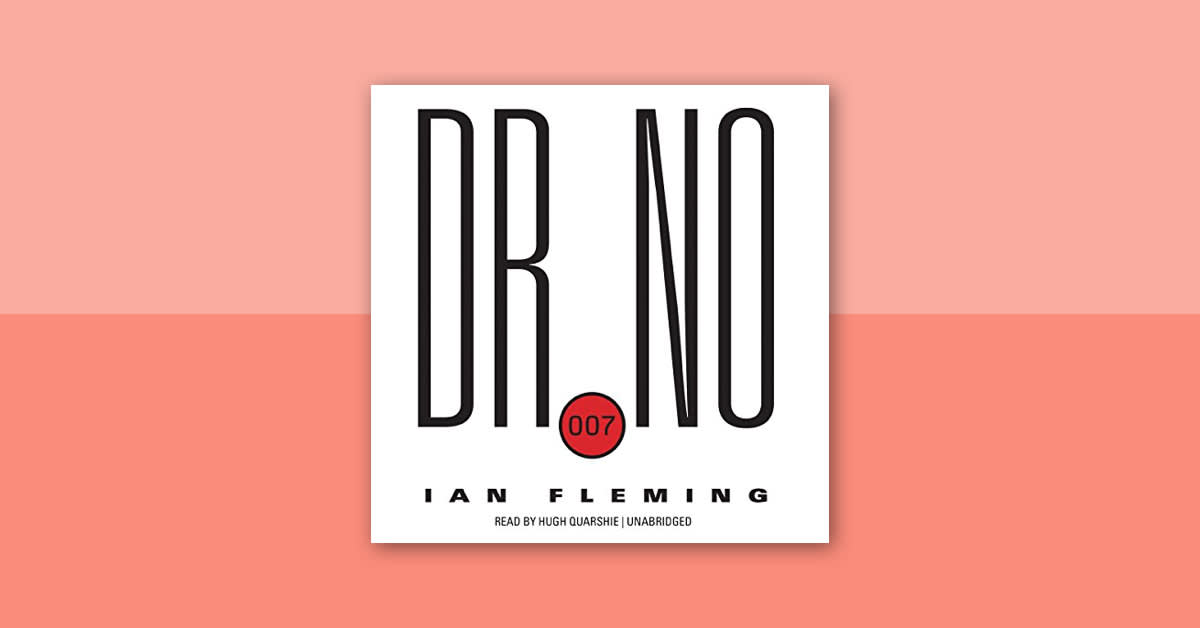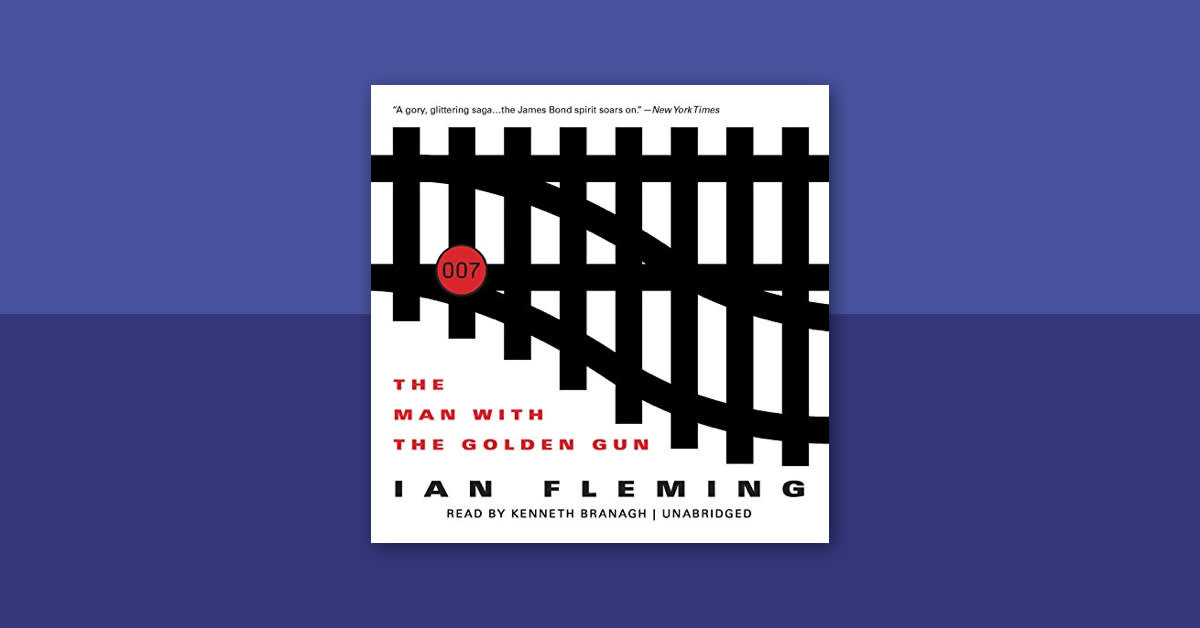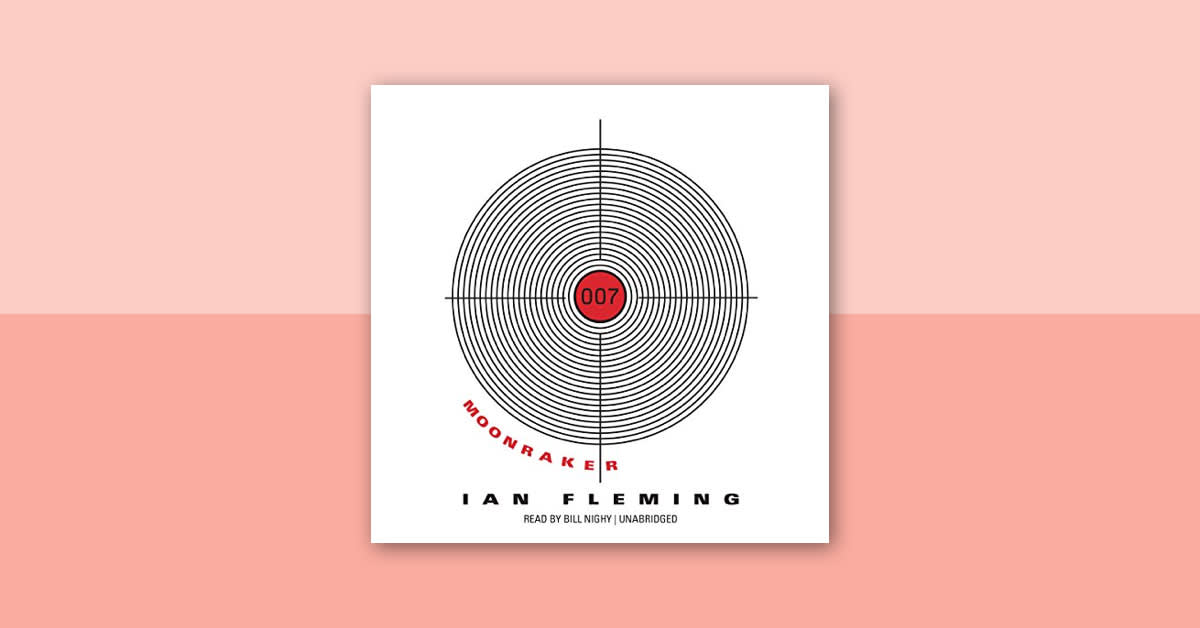Bond, James Bond—aka 007, top agent for MI6, the British Secret Service. It's safe to say that everyone knows the name and at least some of the trademarks of this iconic super spy, the intrepid and debonair hero of 25 films—most recently, No Time to Die (2021)—and numerous audiobooks. Less is commonly known about the fascinating life and adventures of 007's creator, who kicked off the Bond craze with his 12 novels: Ian Fleming. Read on to learn more about the author—and uncover how much of the real Fleming lives on in the fictional Bond.
What is Ian Fleming's background?
Ian Fleming was born in London on May 28, 1908, into a respectable, upper-class British family. His maternal grandfather was captain in the Royal Buckingham Militia and his father was a member of Parliament. The “black sheep” among his four brothers, Ian attended the tony Eton College, excelling in athletics and truancy, and then spent a year at the Royal Military College Sandhurst. From there, he was sent by his overbearing mother to a resort in Austria to improve his language skills in preparation for a post with the Foreign Office. While at the resort, Fleming also flexed his imagination by writing fiction. He then moved on to Munich University and Geneva University to continue polishing his German and French. After failing his exams for the Foreign Office, Fleming embarked on a career in journalism. While at Reuters, he landed an assignment that would mark the start of his journey to James Bond.
Was Ian Fleming a British spy?
In 1933, Fleming was dispatched to Moscow to cover the trial of six British engineers charged with espionage. Shortly after, he left Reuters for more lucrative work, resulting in brief stints as a banker and a stockbroker. In the spring of 1939, the Foreign Office recruited Fleming to return to Russia for a secret assignment: to assess and report on Soviet military strength ahead of an almost certain war. Within months, he joined the British Naval Intelligence. Starting in September of that year, he oversaw clandestine operations on mainland Europe. At one point, he flew to America to meet with FBI chief J. Edgar Hoover and later played a strategic role in a raid on the German-occupied French town of Diep. Over the course of World War II, Fleming was instrumental in several covert operations and rose up the ranks to Commander—a rank he subsequently gave to his fictional British Secret Service agent.
What inspired Fleming to become a writer of spy fiction?
From his youth, Fleming was an avid reader of adventure novels, including the works of Robert Luis Stevenson, Jules Verne, H. Rider Haggard, and masters of early spy fiction like Sapper (the pseudonym of H.C. McNeile). During his World War II service, though he played a significant role in espionage campaigns, Fleming's work was largely conducted from his desk. Andrew Lycett, author of the biography Ian Fleming, notes, "He saw all these secret agents arriving from interesting assignations and he sort of decided that he would have liked to have been more like them. He was really somebody who was stuck in the Admiralty for most of the war, so he started thinking about writing what he told a colleague was 'the spy novel to beat all spy novels.'"
Late in the war, Fleming attended a naval conference in Kingston, Jamaica, and fell in love with the Caribbean country. On the flight home, he confided to a friend that after celebrating Allied victory, he intended to live in Jamaica... "Just live in Jamaica and lap it up, and swim in the sea and write books." After the war's end in 1945, he accepted a position with the London Sunday Times as Foreign Manager, overseeing a network of overseas correspondents. In his contract, he negotiated two months off every year to dedicate to living in Jamaica and writing. In 1947, he bought a former donkey racetrack on the northern coast of Jamaica and had a grand house built, which he named Goldeneye.
Over the first two months of 1952 at Goldeneye, Ian Fleming wrote the novel that introduced the world to Special Agent 007. Published in 1953, Casino Royale became an instant smash. Every year afterwards until his death, Fleming spent January and February in Jamaica writing a James Bond adventure.
Where did Ian Fleming get the name James Bond?
Now synonymous with the dashing British spy master, James Bond was the name of a real-life person: an American ornithologist. The original James Bond was a Caribbean bird expert and author of the definitive field guide, Birds of the West Indies. An avid birdwatcher, Fleming frequently consulted his copy of Bond's birder bible; while writing his first spy novel, he was suddenly struck by the ornithologist's short, unromantic, and yet very masculine name. As Fleming explained in an interview, published in The Guardian on April 5, 1958: "I wanted the simplest, dullest, plainest-sounding name I could find; 'James Bond' was much better than something more interesting, like 'Peregrine Carruthers'. Exotic things would happen to and around him, but he would be a neutral figure—an anonymous, blunt instrument wielded by a government department."
Interestingly, there was also an actual British spy named James Bond. In 2020, the Institute of National Remembrance revealed that a James Albert Bond (1928-1950) had worked at the British Embassy in Warsaw and conducted espionage activities. Whether Fleming was aware of the existence of James Albert Bond the spy remains a mystery.
The bird master James Bond gets a shout out in the film Die Another Day, when Pierce Brosnan's Bond briefly poses as an ornithologist and picks up a copy of Birds of the West Indies.
How much of the fictional James Bond was based on the real Ian Fleming?
Fleming based his fictional character on a number of individuals he came across during his time in intelligence, admitting that Bond was "a compound of all the secret agents and commando types I met during the war." The author drew on the experiences of his espionage career and other aspects of his life as inspiration when writing, including using names of school friends, acquaintances, relatives, and lovers throughout his books. Though not identified by name, his superior officer in the British Naval Intelligence, Admiral John Henry Godfrey, is likely to have inspired Bond's British Secret Service superior, M.
Yet, many of Bond's signature traits and tastes were Fleming's own. Like Bond, Fleming had a passion for gambling and golfing—the author and his character even shared the same golf handicap—and relished scrambled eggs. And Fleming shared three of his celebrated spy's most notorious habits: drinking, smoking, and womanizing.
What is "The Bond Martini"?
When it comes to martinis, Fleming had similar preferences to Bond's—for instance, neither approved of an olive in their martini and both preferred their cocktail "shaken, not stirred." Fleming, who drank both gin and vodka martinis, created The Vesper Martini especially for Bond. Named after the seductive double agent Vesper Lynd, it's the first martini Bond orders in his very first spy adventure, 1953's Casino Royale. The Vesper Martini, aka "The Bond Martini," is a unique concoction and quite potent: it combines gin and vodka with Kina Lillet, a bygone French wine-based aperitif.
Compared to the classic gin martini, The Vesper Martini has a slightly sweet yet bitter taste. Fleming later admitted that when he came to try it, he didn't like it much. Want to try it for yourself? Even though Kina Lillet is no longer available, you can shake up an updated version of The Bond Martini with four basic ingredients: 3 ounces gin, 1 ounce vodka, 1/2 ounce Lillet Blanc or dry vermouth, and lemon peel for garnish.
A bit of bar trivia: The now-famous catchphrase "shaken, not stirred" first appears in Fleming's fourth Bond novel, Diamonds Are Forever (1956). However, Bond didn't actually utter those words himself until the sixth book in the series, Dr. No (1958). Despite the spy's association with martinis, the alcoholic beverage most mentioned in the James Bond novels is champagne.
How many cigarettes did both Fleming and Bond regularly smoke?
In most of the novels, Bond smokes an average of 60 cigarettes a day—roughly the equivalent of lighting up a new smoke every 15 minutes. He cuts back to around 25 cigarettes a day after his visit to a health farm in 1961's Thunderball. 007's preferred cigarettes were also the same as his creator's. In the 1930s, Fleming began buying custom-made cigarettes, hand-rolled with no filter, containing a Balkan-Turkish tobacco mixture with an extra kick of nicotine, from Morland & Co. of London. During the war, he had three gold bands added to his smokes to mirror his Commander's rank. When smoking in his native England in both the earlier books and films, Bond enjoys an intense specialty cigarette: a Morland blend, with three gold bands. When the books became a hit, Morland obtained Fleming's permission to produce the "James Bond Special No. 1" cigarette, complete with those distinctive gold bands, sold in elegant boxes.
In the novels, Bond never quit smoking. In the movies, 007 as played by Sean Connery, George Lazenby, and Timothy Dalton all smoked cigarettes, while Roger Moore and Pierce Brosnan both enjoyed an occasional cigar. Bond, as played by Brosnan, lit up for the last time on screen in 2002's Die Another Day. In 2008's Quantum of Solace, the spy was scripted to be smoking in several scenes—but Bond actor Daniel Craig just said no. As Craig stated in a 2008 interview with the Daily Mail, "I don't wish for him to smoke. Fleming wrote a Bond who smoked 60 cigarettes a day. I can't do that and then run two-and-a-half miles down a road—it just doesn't tie in."
Fleming himself smoked up to 80 cigarettes a day, until he suffered his first major heart attack.
Was Ian Fleming, like James Bond, a determined bachelor?
Like his fictional spy, Fleming was a womanizer. As a young man, he had many girlfriends and dalliances; he was reportedly forced to leave Sandhurst early after contracting gonorrhea from a prostitute. While studying in Geneva, he fell in love with the daughter of a Swiss landowner whom he met at a ball, Monique Panchaud de Bottones. His mother disapproved of their relationship, and shortly after Fleming returned to London in the fall of 1931, their romance ended. However, the author is thought to have always remembered her fondly, as he later provided James Bond with a Swiss mother named Monique.
In 1934, Fleming met an alluring 21-year-old married woman, Lady Ann O'Neill. Five years later, the two embarked on a long-lasting love affair. In 1945, shortly after the death of her first husband, Ann married again, this time to Lord Rothermere, the proprietor of the Daily Mail—although it is likely she had hoped to become Mrs. Fleming. A determined bachelor, Fleming continued his affair with Ann, on and off, over the next six years. In 1951, Ann found that she was pregnant with Ian's child. In March of 1952, Bond's creator finally tied the knot.
Bond was also married, briefly but memorably, in both Fleming's 1963 novel On Her Majesty's Secret Service and its 1969 film adaptation, to Teresa "Tracy" Draco, aka the Contessa Teresa di Vicenzo, daughter of a notorious crime boss. In both the book and the movie, Tracy is murdered shortly after the wedding by Bond supervillain Ernst Stavro Blofeld.
How many children did Ian Fleming have?
In August of 1952, Ian and Ann Fleming welcomed the birth of their only child, Caspar. A few weeks after his son was born, Fleming wrote to a friend, "If it were possible to make a better man out of me he is certainly assisting the process." A devoted father, the author enjoyed delighting Caspar with bedtime stories, particularly the ones he concocted about a magical car. In 1962, while convalescing from a heart attack at the London Clinic, Fleming asked for a pen and paper. He began to write a children’s book based on the whimsical tales he had made up for Caspar. In 1968, the Bond producers adapted Chitty Chitty Bang Bang into a film starring Dick Van Dyke, with a screenplay by children's author Roald Dahl.
How did Ian Fleming die?
Ian Fleming suffered his second, and fatal, heart attack on the morning of his son’s 12th birthday. He died on August 12, 1964, at age 56.
Will James Bond ever die?
Over the half century-plus since his creator's death, James Bond has lived on—and his popularity keeps soaring. The fictional British MI6 agent has continued his adventures in many authorized Bond novels written by eight different authors: Kingsley Amis, Christopher Wood, John Gardner, Raymond Benson, Sebastian Faulks, Jeffery Deaver, William Boyd, and Anthony Horowitz. Bond also dazzles on screen in the longest continually running film series of all time—now numbering 25 films, with the 2021 release of No Time to Die—as portrayed (so far) by six classy and commanding actors: Sean Connery, George Lazenby, Roger Moore, Timothy Dalton, Pierce Brosnan, and Daniel Craig. Thanks to the talents of these authors and actors, along with various screenwriters, producers, and directors, 007 has kept up with the times while remaining timeless. After all, as Ian Fleming certainly knew when he first conjured up James Bond, a dashing hero never goes out of style.




